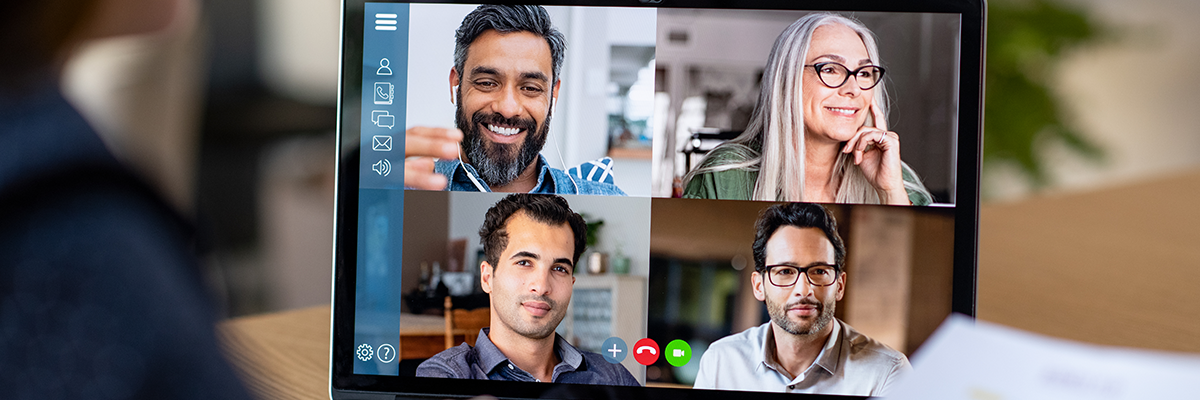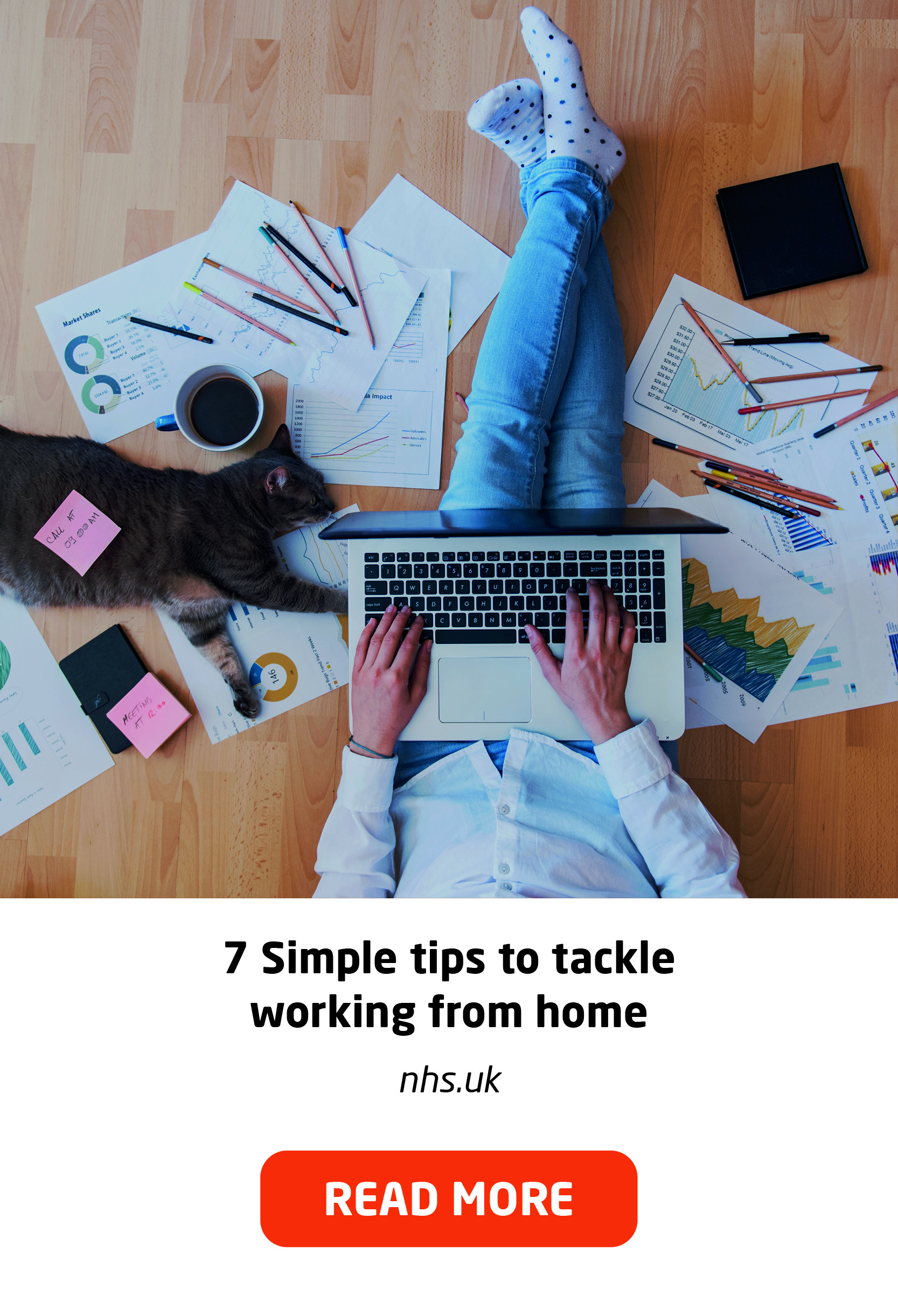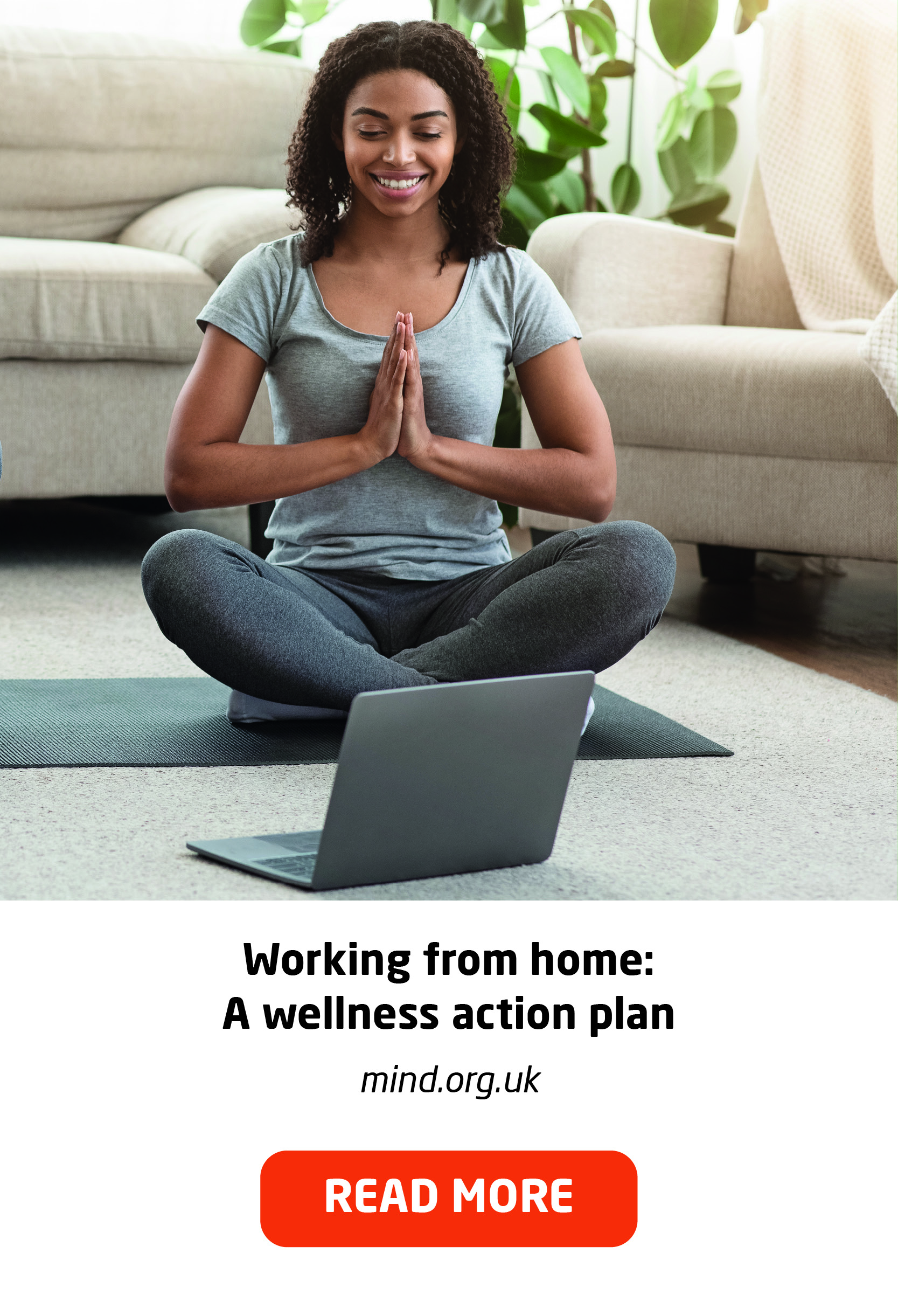

There is an estimated 6.8 million people working alone in the UK. Internationally, this figure is much higher and is expected to rise as the continued change in working habits forces more remote working.
It is a common myth to think that the term ‘lone worker’ simply refers to people who work completely alone. Although thousands of people do indeed fall into this category, the term ‘lone worker’ actually refers to a much broader spectrum of people - including anyone who works remotely or feels vulnerable in their work - many of whom probably don’t even know that they are lone workers.
The HSE defines a lone worker as “those who work by themselves without close or direct supervision”, therefore, encompassing millions of workers in a range of roles from a full spectrum of industries.


In April 2020, statistics released by the UK's Office for National Statistics showed 49.2% of adults in employment were working from home, as a result of the social distancing measures introduced in response to the coronavirus pandemic. In 2020 a brand building company Buffer and start-up community AngelList conducted a survey with over 3,500 remote workers from around the world to get a behind-the-scenes look into their experiences and feelings around being a remote worker. Here’s their main findings:
- 98% of remote workers want to continue to work remotely (at least for some of the time) for the rest of their careers.
- The biggest benefits seen in remote working are:
o Ability to have a flexible schedule
o Flexibility to work from anywhere
o Not having to commute
o Ability to spend time with family - The biggest struggles with working remotely are:
o Collaboration and communication
o Loneliness
o Not being able to switch off
o Distractions at home
o Staying motivated


All of us experience stress. A lot of it can be attributed to our working lives and some can stem from personal circumstances, trouble in our home or a relationship breakdown. While we all experience stress we all have different ways to deal with it and the strain it can put on our bodies. Some of us may use stress to motivate and push us but when it begins to feel overwhelming stress can really alter our mental state and cause anxiety, depression, burnout and much more. Katy works for an electrical wholesaler and had been with the company for several years. While Katy enjoyed her job, she approached the Electrical Industries Charity for mental health support. 1 in 3 of all of those who approach the charity are seeking mental health support and for Katy she was struggling to cope with a diagnosis of Generalised Anxiety Disorder.
Generalised Anxiety Disorder can manifest itself in different ways, but Katy was struggling with intense feelings of panic, intrusive thoughts, lack of focus, profuse sweating, and sleep disruption. Katy enjoyed work because it gave her a routine. For a lot of us routine can be a massive source of comfort and stability and when things upset our norm it can be difficult to cope. However, when the pandemic forced Katy to begin working from home her stress and anxiety became exacerbated as her normal routine had disappeared. The pandemic meant 49.5% of workers began to work from home and this change to the normal can feel really disorientating. The stress of a new routine coupled with Katy’s anxiety disorder meant her symptoms were worsening. During the pandemic, the Electrical Industries Charity provided 1,406 grants to those struggling with mental health and/or in need of financial assistance. Of the 1 in 3 mental health cases the charity support 76% are living with anxiety and/or depression, like Katy.
Katy’s anxiety spiralled out of control. She began to catastrophize, and negative thoughts clouded her mind all the time meaning focusing on work became even more difficult. Her stress levels grew as she found coping with day-to-day life more difficult and was unable to escape her anxiety through a normal work routine. Katy reached out to the Electrical Industries Charity when she was close to breaking point. The charity assigned Katy a welfare caseworker from the team who sourced and funded a local therapist to provide virtual therapy. During these sessions Katy developed coping strategies to manage her anxiety and learned how to better cope with changing circumstances. Katy received 12 sessions of therapy and her Electrical Industries Charity caseworker stayed in regular contact with her. Katy’s caseworker helped to support her transition to home working and liaised with her workplace to ensure Katy had the right tools and resources to effectively do her role from home. Katy felt more in control after this and began to enjoy working from home and its benefits. Since finishing her therapy sessions Katy is enjoying a combination of working from home and in office working. Katy is fully committed to the therapy techniques and has applied them to her daily life. Katy feels empowered and better equipped to cope in what would have been anxiety triggering situations for her. The support of the Electrical Industries Charity has meant Katy is now feeling fulfilled and less anxious with an optimistic outlook on what the rest of the year has in store despite its ever-changing circumstances.
If you need support to manage stress or anxiety then please contact This email address is being protected from spambots. You need JavaScript enabled to view it. or you can call our welfare team
on 0800 652 1618.


The COVID-19 pandemic has been difficult for all of us and with a lot of the workforce furloughed, working from home or facing redundancy and job uncertainty at this time can be one of the biggest stressors in our lives.
Suzie had worked with a major energy company for many years and due to the pandemic had now been put forward for redundancy after working in the same organisation and team for over twenty years. Although Suzie understood the pandemic period was going to be tough for all workforces, she had thought her job was safe. Her employer made Suzie redundant along with several others within her team. Suzie then had the stress of searching for a new job in a saturated job market where applicants were ever increasing and job posts decreasing.
Suzie had also been struggling with the enforced isolation at home and found herself feeling more and more stressed as well as anxious. Suzie’s work life wasn’t her only stressor. Suzie’s isolation and loneliness was further compounded by having to try and support her frail and elderly dad who did not live with Suzie but lived on his own some miles away. Suzie was also unable to see her mother who lived within a specialised care home and this made Suzie feel even more lonely and guilty for not being able to spend time with her mum. Unable to see her mum and struggling to help her dad Suzie’s stress levels increased and her anxiety worsened.
After twenty years of service within her current organisation Suzie felt understandably overwhelmed with the thought of searching for a new role. It had been two decades since she had had an interview and longer since she had written a CV. Suzie’s sense of dread and stress crept up even more and she began to feel isolated from her support network leaving her feeling even lonelier.
Suzie contacted the Electrical Industries Charity initially for CV support and interview assistance. Over 2020 the charity received more calls than ever for those who had been made redundant or were seeking additional work to supplement their income. The Electrical Industries Charity referred Suzie to their CV service who helped her to revamp and update her CV. Although Suzie was now armed with a good CV, she still felt overwhelmed, stressed and depressed. She spoke openly with an Electrical Industries Charity case worker and she was referred for therapy.
Suzie is now attending charity sourced and funded therapy sessions and she is learning new coping strategies. Suzie is finding the support of someone external and non-judgemental extremely beneficial. The Electrical Industries Charity welfare team are in regular contact with Suzie and she is optimistic about finding a new role within the sector.
You do not have to suffer with stress whether that be personal or within working life. With the ever-changing landscape of the world the Electrical Industries Charity understand you may need additional support. If you do require assistance please contact This email address is being protected from spambots. You need JavaScript enabled to view it. or call 0800 652 1618


Whether you have been working remotely for a long time or are a newbie to this, there are things to take into consideration that will help you look after your physical and mental health. We look at the most common challenges of remote working and how to overcome them.
1. Managing Your Own Schedule & Time
Sounds appealing, right? No more setting the alarm for 6am. No more sitting in your cubicle all day, your only escape a measly hour for lunch. You can set your own hours and work when you feel like it. Freedom is yours!
Except it doesn’t work that way.
The concept of “normal business hours” remains in use all across the globe because it works as an efficient time management tool. When you have set hours, you know when you’re supposed to work and when you’re free to pursue other interests or spend time with your family or friends. You can make plans days, weeks, or months in advance because you know when you’re going to be working. Without that structure, many at-home workers find themselves in big trouble. They sleep in, they procrastinate, and they tell themselves they’ll knock it out later. Suddenly, they look at the clock and realize their kids come home from school soon — and they didn’t do what they’d intended to do. That leaves them with a choice: work through the evening or just procrastinate further. Many conventional employees complain about the structure of a regular schedule. But it actually serves most people far better than they realize.
How to Avoid Time Management Issues:
Set your workdays and hours and stick to them. In most cases, that either means maintaining regular business hours or basing your work hours on the schedule maintained by your spouse or kids. Not only does a conventional schedule make you more productive, it allows you to spend time with the people you care about. But if you do decide to stick with the tried-and-true 9-to-5, you still reap significant work-at-home benefits. You don’t have to commute to work, so you can sleep in later.

2. Blurred Line Between Personal & Professional Life
On the other side of the coin, when you work from home, you no longer have a clear geographic division between workspace and personal space. Ideally, your home is a place of relaxation, safety, and security. It’s a place where you subconsciously slip into a calm, easy-going state of mind, putting the stresses of the workday behind you.
Working from home punches a hole right through that neat mental division. Many telecommuters complain they feel like they’re never off the job. They always feel a compulsion to check email or get “just one last thing done.”
In other words, they have a hard time turning off and relaxing. Ever.
How to Avoid Blurred Personal & Professional Life
You must set aside a physical space for working, separate from the rest of your home. For many, that means a home office. If you have a spare bedroom, library, den, formal dining room, or other room in your home that sees infrequent use, consider converting it to a home office, even if only temporarily. If possible, close the doors while you work and hang a “Do Not Disturb” sign.
Set clear rules to your family or house mates. When the home office door is closed you are not to be disturbed. Invest in a pair of outstanding noise-cancelling headphones, which block out family noise and keep you firmly entrenched in your work. Ultimately, the clearer the boundaries you draw — both in space and time — between your work life and personal life, the better you can keep the two comfortably distinct.
3. Distractions
Even if you decide on a set schedule and have a dedicated space to work, actually staying productive during your working hours can prove challenging if you’re working from home. Surrounded by your personal belongings and reminders of chores, it’s hard to focus. Distractions like your TV, books, and the laundry start calling to you. Despite planning to work until 12:30 before breaking for lunch, you find an excuse to break early. If your spouse or children also happen to be home, they don’t hesitate to interrupt you at every opportunity.
How to Avoid Distractions
Physically removing yourself into a separate home office helps. But also make sure you remove distractions from your work area. With no TV or books around, you succumb to them less easily. Noise-cancelling headphones can help you avoid auditory distractions, such as your kids playing or your spouse watching your favourite show. Set rules with your family not to disturb you while you’re working. Tell them to behave as though you were at the office.
4. Reduced Supervision & Direction
People love to gripe about their bosses. But bosses serve a crucial purpose, providing direction and supervision. They not only tell you what you need to do, but they give you feedback about your progress on it. When you work from home, you tend to get less supervision and direction. Your boss (or clients, as the case may be) typically doesn’t give you as much guidance — guidance many employees desperately need to stay on track.
How to Avoid Lack of Supervision & Direction
If you work for an employer, remain in close communication with your supervisor. Ask them which projects you should prioritize and when they expect you to reach each milestone. At least once each week, connect with them to discuss your progress, your challenges, and any ideas to address those challenges. Keep them in the loop so they can provide better feedback and direction. If you work for yourself, start with setting broad weekly goals. Then every morning, set three high-priority tasks. You can cycle in smaller tasks like keeping up with email as you get a free five minutes but keep your eye on the larger high-impact tasks. All of these help you answer that most critical of questions: What’s the most important work I can do today?
5. Social Isolation
Sitting at home by yourself all day takes a toll. Humans are social animals. They need interaction with other people. Without a watercooler to swap jokes, stories, and shop talk around occasionally, telecommuters can get lonely. Videoconferencing helps — a little. But it’s not the same as face-to-face interaction. If you don’t get social interaction at work, you need to get it elsewhere.
How to Manage Social Isolation
It helps to simply anticipate this challenge and plan for social interaction outside of work. Normally, that means meeting up with nearby friends or colleagues for lunch, taking classes at the gym, or making dinner or happy hour plans. Video calls with colleagues, friends and family are a good way to keep connected but cannot replace real life interaction. Consider walks, hikes, or other outdoor activities, which offer plenty of ventilation. If you have something to look forward to you might find that you don’t mind working alone all day if you can interact with friends a few days a week outside of work.

6. Health & Safety while working from home
This is one thing that cannot be overlooked while working from home. Your employer is responsible for your health and safety as much as for any other employee working in the office or on site. You would spend most of your day at your computer and need to make sure that your working space is set up ergonomically and doesn’t do harm to your body. This is sometimes easier said than done. Another thing to consider is being completely isolated at home, if you have no family at home during the day or live by yourself. What if there is an emergency? Would you know who to contact?
How to stay healthy and safe while working from home
Ask for a meeting with your employer to do a risk assessment on any major risks associated with you working from home. This will highlight any potential issues and you can work together on fixing these.
Some of the things to consider for the risk assessment would be:
- Desk arrangements – are you sitting in the best possible position to avoid long term health issues?
- Equipment – have you got all the necessary equipment to carry out your work remotely and stay in touch with your colleagues and manager?
Ergonomic desk set-up
Most of us spend hours at our desk every day. Bad habits and incorrect posture can lead to short-term pains and aches that can turn into long-term injuries. There are a number of useful tips in the video below you should follow to look after your physical wellbeing while working from home.
Working from home, especially during extended periods can be difficult to adjust to. For many of us, it means learning how to manage our different areas of work under new circumstances. While we all experience and learn to adapt to new situations and environments differently, there are some challenges that we are all facing.
We’ve put together some top tips on how to get the most out of working from home while looking after yourself and your mental health.
- Create your morning routine
Create a morning routine that brings you up until the moment you begin work for the day. It may sound trivial, but this helps you mentally prepare for the day ahead and get into the "I'm going to work" mindset. It could be making a cup of coffee. It might be returning home after a jog, or doing some mindfulness sessions. Whatever it is, setting yourself up for the day can improve your state of mind and psychologically prepare you to start work. Why not try mindfulness or meditation to get your morning started: Headspace - Weathering the Storm. - Establish boundaries
It is easy to lose track of time when working from home, so set a schedule, and stick to it...where you can. Having clear guidelines for when to start work and when to call it a day helps maintain your life-work balance. Aim to start and finish at your normal working times. - Create your own workspace
Although it's tempting to head to your sofa with a laptop, you're may find setting up a work area helps you stay focused. If you can, try to set aside a specific area or space where you can work. If you don't have a desk, use a table or worktop. Besides making you feel like you're at an "office," this helps you maintain good posture, avoid distractions, and mentally leave your work behind at the end of the day. The NHS advice is that you should adjust your chair so you can use the keyboard with your wrists and forearms straight and level with the floor. - Set ground rules with the people you share your space with
There might be other people in your home during these exceptional times. They may be working from home too or self-isolating. You may all need to share a limited amount of space so it’s important to set some ground rules. For example, when you need access to a certain area of your home; or designated times for ‘quiet time’. - Take breaks
Remember to take normal breaks, including your lunch break. Get up and move about, go for a short walk or make a coffee. Try setting a timer or alarm on your computer screen or mobile phone to remind you to take a break.
- Connect with colleagues
Loneliness, disconnect, and isolation are common problems in remote work life, especially in the current uncertain and worrying situation. Making the effort to speak to your colleagues regularly can make a difference. Conference calls, Zoom, Skype, and Microsoft Teams are all examples of how you can keep connected. Try to pick up the phone for a real conversation rather than relying on email or instant messaging all day. Video calls in particular can help you still feel connected to your colleagues. - Get some fresh air when you can
Do some exercise outside, even a short walk can benefit you both mentally and physically. - Drink plenty of water
People get dehydrated when they sit, and if you’re heating is still on in your home, then you’ll need the extra water to keep yourself physically and mentally healthy. To ensure that you are consuming a sufficient amount of water, keep bottles of water handy to make sure you drink your recommended 1.5-2 litres per day. You can also download apps on smartphone or tablet to remind you to drink regularly. - Stand up and stretch
Sitting all day isn’t healthy even if you’re at the office, but working from home means you skip your commute and have fewer reasons to get up from your chair throughout the day. If it’s possible in the area you have set up for home working, try standing up to do your work for a change of pace. Standing uses more muscles and burns more calories than sitting and it’s good for your back and posture. If you can’t stand and work, stretching is vital for maintaining good posture, especially when working at a desk for several hours a day. Try standing up every 30 minutes or so to stretch your chest and extend your spine to reverse the hunched position of sitting. Standing and stretching can also help to reduce back and neck pain. - Listen to music
If you find working from home to be a little too quiet, you miss the buzz of the office and find it difficult to focus, listen to music, turn on the radio, or put the TV on quietly in the background.
- End your day with a routine
Just like you should start your day with a routine, create a habit that signals the close of the workday. You might have a simple routine such as shutting down your computer and turning on a favourite podcast or writing the next day’s to-do list. Whatever you choose, do it consistently to mark the end of working hours. Put your work away or shut your laptop so you know you are back in your personal home time and place. - Reflect on your mental health
Ensure you take time to reflect on and try to be mindful of your mental health. Look out for changes in your feelings, practice self-care and be aware of any triggers or symptoms surrounding your mental health.
Make sure you keep in touch with support networks, even a text, phone call or video chat can make a difference.

Working from home, especially during extended periods can be difficult to adjust to. For many of us, it means learning how to manage our different areas of work under new circumstances. You may be able to claim tax relief for additional household costs if you have to work at home on a regular basis, either for all or part of the week. This includes if you have to work from home because of coronavirus (COVID-19).
You cannot claim tax relief if you choose to work from home.
Additional costs include things like heating, metered water bills, home contents insurance, business calls or a new broadband connection. They do not include costs that would stay the same whether you were working at home or in an office, such as mortgage interest, rent or council tax. You may also be able to claim tax relief on equipment you’ve bought, such as a laptop, chair or mobile phone.

How much you can claim
You can either claim tax relief on:
- £6 a week from 6 April 2020 (for previous tax years the rate is £4 a week) - you will not need to keep evidence of your extra costs
- The exact amount of extra costs you’ve incurred above the weekly amount - you’ll need evidence such as receipts, bills or contracts
You’ll get tax relief based on the rate at which you pay tax. For example, if you pay the 20% basic rate of tax and claim tax relief on £6 a week you would get £1.20 per week in tax relief (20% of £6).
For more information and to check if you’re eligible please visit: https://www.gov.uk/tax-relief-for-employees/working-at-home

As an employer, you have the same health and safety responsibilities for home workers as for any other workers.
When someone is working from home, permanently or temporarily, as an employer you should consider:
- How will you keep in touch with them?
- What work activity will they be doing (and for how long)?
- Can it be done safely?
- Do you need to put control measures in place to protect them?
There will always be greater risks for lone workers with no direct supervision or anyone to help them if things go wrong. Keep in touch with lone workers, including those working from home, and ensure regular contact to make sure they are healthy and safe. If contact is poor, workers may feel disconnected, isolated or abandoned. This can affect stress levels and mental health.
Working with display screen equipment:
For those people who are working at home on a long-term basis, the risks associated with using display screen equipment (DSE) must be controlled. This includes them doing workstation assessments at home. There is no increased risk from DSE work for those working at home temporarily. So, in that situation employers do not need to ask them to carry out home workstation assessments. However, employers should provide workers with advice on completing their own basic assessment at home.

There are some simple steps people can take to reduce the risks from display screen work:
- Breaking up long spells of DSE work with rest breaks (at least 5 minutes every hour) or changes in activity
- Avoiding awkward, static postures by regularly changing position
- Getting up and moving or doing stretching exercises
- Avoiding eye fatigue by changing focus or blinking from time to time
Display screen equipment (DSE) workstation checklist: https://www.hse.gov.uk/pubns/ck1.pdf
To find out more about how to support lone workers, please visit HSE website, where you can find loads of useful resources on this topic: https://www.hse.gov.uk/lone-working/employer/index.htm

Home working can cause work-related stress and affect people’s mental health. Being away from managers and colleagues could make it difficult to get proper support. Put procedures in place so you can keep in direct contact with home workers and recognise signs of stress as early as possible. We talk about stress management in January Health Calendar
It is also important to have an emergency point of contact and to share this so people know how to get help if they need it.
Top Tips to encourage employees to stay mentally healthy:
- Be aware that individual circumstances vary, and that remote working may not be appropriate for some staff. Consider options to support individual employee needs.
- Provide appropriate IT support and guidelines to set up remote working to ensure that employees have what they need to fulfil their role and to be fully productive
- Set clear expectations of working hours, and highlight that employees are not expected to stay logged in or check emails after their working day is finished
- Advise teams to stay as connected as possible via company digital platforms, maintaining regular team and 1-2-1 meetings and encourage line managers to schedule regular check-ins with team members
- Encourage employees to stay active and ensure they are looking after their physical health
- Encourage employees take appropriate rest breaks away from their work and screen


References:
1. https://www.lonealert.co.uk/lone-working/what-is-a-lone-worker
2. https://lp.buffer.com/state-of-remote-work-2020
3. https://www.moneycrashers.com/challenges-working-home-business-avoid-failure
4. https://www.samh.org.uk/about-mental-health/self-help-and-wellbeing/coronavirus-information-hub/staying-mentally-healthy-when-working-from-home
5. https://www.gov.uk/tax-relief-for-employees/working-at-home
6. https://www.hse.gov.uk/toolbox/workers/home.htm
7. https://cdn.mentalhealthatwork.org.uk/wp-content/uploads/2020/03/18155128/Supporting-colleagues-to-stay-mentally-healthy-in-unusual-working-conditions.FINAL_.pdf








